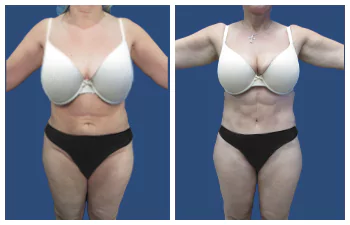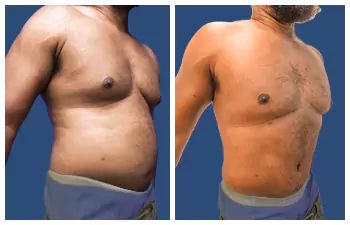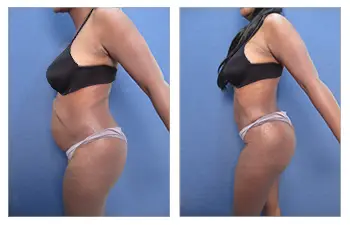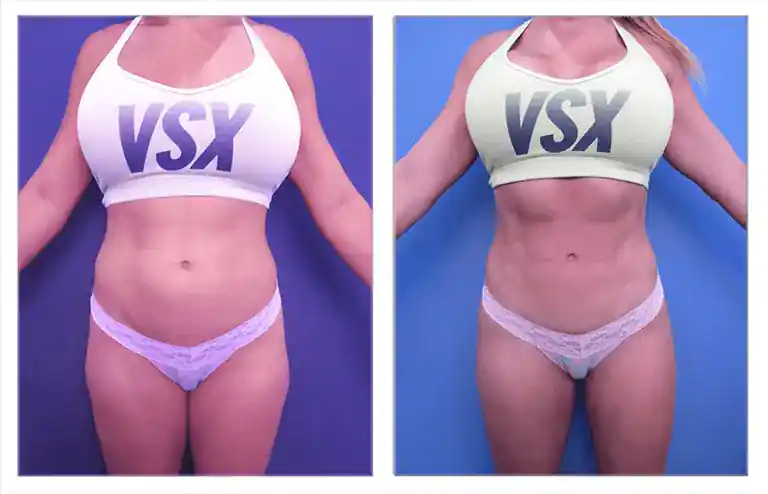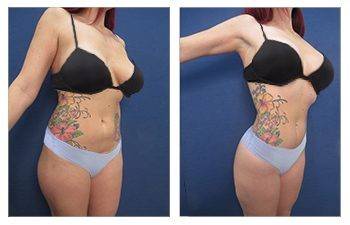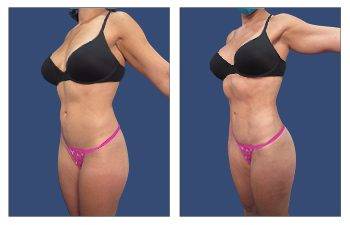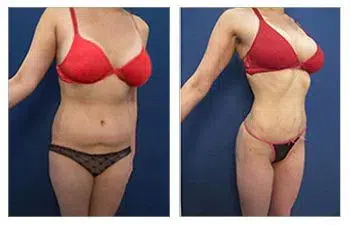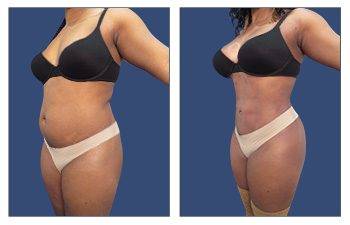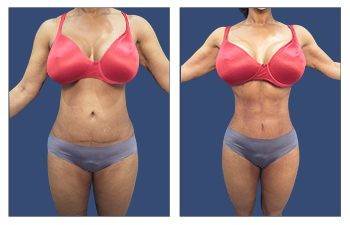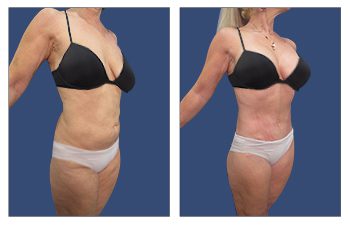Loose Skin vs fat is a common concern for many individuals, especially those on a weight loss journey. The confusion between the two can often lead to misconceptions and unnecessary worry. Your weight loss journey can become a challenging obstacle, especially if you have experienced weight gain and subsequent weight loss resulting in extra skin. This fluctuation in body weight can encourage patients to seek help from a plastic surgeon to understand various treatment options. Skin removal and elimination of fat deposits are dependent on the body type that you have.
However, the general rule is that the removal of skin, as well as the reduction of excess subcutaneous body fat, are the primary goals. In understanding loose skin vs fat, it’s crucial to recognize their distinct characteristics and how they affect our health.
The considerations of skin surgery to remove loose skin apply to the abdomen, where excess abdominal skin and excess abdominal fat must also consider the attenuation of abdominal muscles. If you are trying to determine whether you would benefit from skin removal surgery to prevent loose skin or liposuction to reduce fat, this article is for you. Pinching loose skin can indicate that you might benefit from skin removal surgery.
If you have previously gained weight and are considering fat loss, continue reading this blog. Remember, patients undergo skin excisional surgery, minimally invasive skin tightening procedures, and fat removal surgery. When liposuction surgery is performed, it is important to avoid creating loose skin. The knowledge provided will help differentiate them and guide us toward effective management strategies.
Table of Contents: Loose Skin vs Fat
- Understanding the Basics of Loose Skin and Fat
- Distinguishing Between Loose Skin and Fat
- Health Implications of Excess Skin and Fat
- Dealing with Weight Loss and Its Impact on Skin Elasticity
- Tackling Weight Loss for Fat Reduction
- Surgical Options for Addressing Loose Skin & Excess Fat
- Lifestyle Changes & Non-Surgical Treatments: The Path to Prevention and Management
- FAQs about Loose Skin vs. Fat
- Conclusion
Understanding the Basics of Loose Skin and Fat
The complexities of body composition often revolve around two main components: loose skin and body fat. Loose skin can also be classified as excess skin. Understanding these elements is essential for a comprehensive grasp of overall health.
Defining Loose Skin and Body Fat
First, we must define what constitutes loose skin vs. fat. The former, also known as excess skin, usually results from significant weight loss or aging. It presents itself in a saggy form that drapes over certain body areas. Subcutaneous and visceral fat can be found in the body, with subcutaneous being beneath the skin and visceral around organs. Both contribute to obesity rates, which currently affect an estimated 93.3 million American adults, according to CDC data.
A clear understanding of these definitions provides a solid foundation for further exploration of their unique characteristics.
The Characteristics of Loose Skin
Distinguishing features set loose skin apart from other physical conditions – its texture being one such attribute. Pinched between fingers, it feels thin due to a lack of underlying tissue support – contrasting starkly with areas housing excess subcutaneous fat where more substance is beneath the surface layer.
In addition to touch-based identification methods, visual cues play an integral role in recognizing loose skin’s presence on our bodies – unlike youthful firmness that snaps back immediately after stretching out, this tends not to be true for loose or aged skins that hang loosely instead.
- Paying attention to how your skin responds when stretched can provide valuable insight into whether you’re dealing with excess subcutaneous fat or actual looseness within the dermal layers.
- Analyzing how your flesh feels under direct contact can help differentiate between substantial fatty deposits versus less dense regions indicative of a loosened epidermis.
- Becoming familiar with normal appearances against signs like sagging will equip you better at identifying potential issues early on before they become severe problems.
Distinguishing Between Loose Skin and Fat
Body contouring is a complicated area that necessitates an intricate comprehension of the human form. One aspect that often confuses people is differentiating between loose skin and excess fat. Although they may seem similar, their underlying causes are vastly different, leading to distinct treatment approaches.
The Pinch Test for Identifying Fat or Loose Skin
A straightforward way to differentiate between these two conditions is through the pinc test. You can discern what lies beneath your skin’s surface by pinching an area on your body with two fingers. If there’s minimal substance within the fold of the skin when you pinch it – this usually signifies loose skin. In contrast, if there’s a thicker layer that feels soft to the touch, this could be indicative of excess subcutaneous fat.
This phenomenon, often called ‘skin remains vs. fat exists,’ creates confusion due to its deceptive nature. While sagging skin lacks elasticity due to collagen breakdown over time, ‘fat hanging’ implies bulkier tissue that doesn’t return to place following significant weight reduction.
Surgical Strategies Differ Based On Condition
Given this information, it becomes clear why distinguishing between loose skin and excess fat matters greatly in cosmetic procedures like liposuction or tummy tucks.
- Liposuction focuses on removing extra fatty tissue.
- Tummy tuck targets redundant dermal layers (loose skin).
Health Implications of Excess Skin and Fat
Beyond aesthetics, though, lie more serious implications associated with too much loose flesh or fatty deposits in our bodies…
Health Implications of Excess Skin and Fat
Surplus skin or body fat isn’t merely an aesthetic concern. It’s a health issue that requires immediate attention.
Risks Stemming from Excess Skin
Excessive loose skin, often due to significant weight loss, can lead to physical discomfort and hinder mobility. Skin folds may trap moisture, resulting in irritation, rashes, or even infections if not properly cared for.
Hazards Linked with Excess Body Fat
In contrast, excess body fat is associated with numerous chronic diseases. High blood pressure is one such condition; it strains your heart and arteries, which could culminate in heart disease over time. Moreover, excessive abdominal fat increases the risk of type 2 diabetes due to its impact on insulin resistance.
Beyond these immediate concerns are more long-term implications, like an increased likelihood of certain cancers, including breast cancer in postmenopausal women and colon cancer in men, as per research conducted by the American Cancer Society.
Reducing Health Risks Through Intervention
Surgical interventions such as liposuction or tummy tucks can help manage excess skin and fat. Still, they come with their potential complications, including infection, bleeding, and scarring. So, individuals must consult with a qualified medical professional before deciding on surgery. Lifestyle changes incorporating a balanced diet, regular exercise, and stress management also play pivotal roles in managing both conditions effectively.
In addition, non-surgical options are available today, like CoolSculpting, for reducing localized pockets of stubborn fat. At the same time, Thermage uses radiofrequency technology to tighten sagging skin, although results vary depending upon individual circumstances.
As we further explore this topic, understanding how drastic weight loss impacts our bodies becomes essential, especially when dealing with loose skin after shedding those extra pounds.
Dealing with Weight Loss and Its Impact on Skin Elasticity
The weight loss journey is often a rollercoaster of emotions, filled with highs and lows—a common challenge many face after drastic weight loss is the issue of loose skin.
Navigating Loose Skin After Drastic Weight Loss
Losing a significant amount of weight quickly can lead to excess skin. The skin may become lax due to the body not having enough time to adjust, resulting in sagging or loose skin.
This issue isn’t exclusive to older individuals whose skin naturally loses elasticity over time; younger people can also experience this problem following substantial weight reduction.
A Proactive Approach: Preventing Loose Skin During Your Weight Loss Journey
Mitigating the risk of developing loose skin begins during the process of losing weight itself. You can do this by ensuring proper hydration, which helps maintain your skin’s elasticity.
Tackling Weight Loss for Fat Reduction
Are you embarking on a weight loss journey, particularly targeting stubborn belly fat? It’s essential to adopt a holistic approach. This includes modifications in diet, consistent physical activity, and potentially even medical interventions.
Diet: The First Step Towards Reducing Belly Fat
Did you know certain food groups specifically target stubborn fats? MUFAs, found in avocados and nuts, are a type of fat that can help decrease abdominal fat when incorporated into an appropriate dietary plan. You can find out more about the role of diet here.
The Power of Physical Activity for Effective Weight Loss
Maintaining an active lifestyle goes hand-in-hand with dietary changes by enhancing your body’s metabolic rate, which aids faster calorie burn. Regular exercise helps people of all backgrounds lose weight and strengthen muscles beneath the subcutaneous fat layer, representing stored energy that can contribute to obesity.
Beyond Natural Methods: Medical Interventions for Stubborn Fats
In some cases, natural methods might fall short, especially when dealing with resistant fats unresponsive to dieting and exercising. Under such circumstances, medical interventions may be considered part of a comprehensive weight loss plan under professional guidance.
Liposuction is one procedure that surgically removes excess pockets of body fat. More on liposuction here. However, this should always be seen as a last resort after all other options have been exhausted due to the potential risks involved.
Our next section will delve deeper into surgical procedures designed to address loose skin and excess fats following significant weight loss.
Surgical Options for Addressing Loose Skin & Excess Fat
Body contouring procedures can be the ultimate solution when faced with severe cases of loose skin and excess fat. These surgical interventions are designed to shape your body by removing unwanted tissues, paving the way for a more desirable silhouette.
Tummy Tuck: A Game Changer in Body Contouring
The tummy tuck, or abdominoplasty as it’s medically known, is a procedure that focuses on the abdominal area. It involves excising surplus skin and fat from the midsection while tightening abdominal muscles.
This surgery results in an abdomen that looks flatter and feels firmer, enhancing overall appearance significantly. However, remember that this isn’t an alternative to weight loss or suitable if you’re planning substantial weight changes.
A Spectrum of Body Contouring Procedures
Abdominoplasty is just one piece of the puzzle; other body contouring options are available based on individual needs. For instance, liposuction often complements surgeries like a body lift, which addresses sagging skin around hips, thighs, and buttocks after significant weight loss.
Arm lifts (brachioplasty) and thigh lifts also come into play when targeting areas plagued by loose skin or stubborn fatty deposits. Each procedure offers unique benefits tailored toward achieving desired outcomes without compromising patient safety.
Navigating Risks And Considerations Of Plastic Surgery
Risks inherent to plastic surgery:
- Infection
- Blood clots
- Anesthesia complications, among others
All these potential risks warrant serious discussion with your surgeon before deciding on any operation. This decision shouldn’t be made lightly; careful consideration must also extend to recovery time after surgery, as well as
Lifestyle Changes & Non-Surgical Treatments: The Path to Prevention and Management
As we delve into the realm of loose skin and fat, what are some effective strategies for prevention and management? It turns out that lifestyle changes and non-surgical treatments hold significant promise. I think we should explore this further.
The Role of Physical Activity in Skin Health
Physical activity is a game-changer for weight control and skin health. Regular exercise helps eliminate excess body fat and bolsters your skin’s elasticity. This can range from daily walks to more rigorous workouts like strength training exercises.
For those seeking comprehensive workout routines tailored to different fitness levels, Fitness Blender serves as an excellent resource.
Achieving Healthy Weight: A Balancing Act
Maintaining a healthy weight is another potent strategy against loose skin and excessive body fat. A balanced diet rich in proteins, vitamins, and minerals aids this process by providing essential nutrients for optimal metabolism regulation and overall skin health.
If you want to gain valuable insights on maintaining a healthy weight, please check out the Centers for Disease Control (CDC) resources.
The Slow-and-Steady Approach to Weight Loss
Rapid weight loss often leaves you with sagging or loose skin due to its inability to keep pace with your reduced body mass. Hence, adopting a slow yet steady approach towards weight loss allows your skin ample time to adjust accordingly.
For insightful guidelines on achieving gradual reduction without dieting, please look at the American Heart Association’s guide: How To Lose Weight Without Dieting.
Avoiding Yo-Yo Diets And Embracing Stability
Frequent fluctuations in body mass contribute significantly towards stretch mark formation, weakening elastin fibers and leading to loose skin. Sustainable dietary habits that promote long-term stability should be the focus instead of yo-yo diets, which lead to rapid gains after losses.
The National Institute of Diabetes and Digestive has suggested that sustainable dietary habits promoting long-term stability should be adopted to avoid rapid gains or losses in body mass, thus reducing the risk of stretch marks formation.
FAQs about Loose Skin vs. Fat
Can you tell the difference between loose skin and fat?
Yes, through a pinch test. Loose skin is thin with little substance underneath, while pinched fat feels thick and spongy.
Does loose skin ever tighten?
In some cases, yes. Skin elasticity can improve with proper hydration, nutrition, exercise, and skincare routines.
Does loose skin still have fat in it?
Often, yes. What appears as loose skin after weight loss may be residual subcutaneous body fat covered by the skin.
Will I have loose skin after losing 50 pounds?
Possibly, but only sometimes. Factors like age, genetics, rate of weight loss, and the total amount lost influence whether you’ll experience sagging or excess skin.
Conclusion
- Understanding the difference between loose skin and fat is crucial in your health journey.
- Their unique characteristics play distinct roles in our bodies, affecting appearance and overall well-being.
- With knowledge comes power – the power to effectively differentiate, manage, and prevent these conditions.
- We’ve explored how drastic weight loss can lead to loose skin and revealed strategies for preventing this outcome.
- Fat reduction was another key focus area with insights into tackling stubborn belly fat during a weight loss journey.
- Surgical procedures like tummy tucks or body contouring offer solutions for severe excess skin or fat cases.
- Lifestyle changes and non-surgical treatments are equally vital tools that contribute to managing these issues successfully.
- Now that you know this information on Loose Skin vs. fat, it’s time to take action.
If you’re ready to transform your body confidence through cosmetic plastic surgery procedures tailored just for you, consider SurgiSculpt as your trusted partner on this transformative journey.
Visit today, where we provide comprehensive guides aimed at helping individuals make informed decisions about their health.
Your healthier self awaits! Click here for your complimentary consultation!



